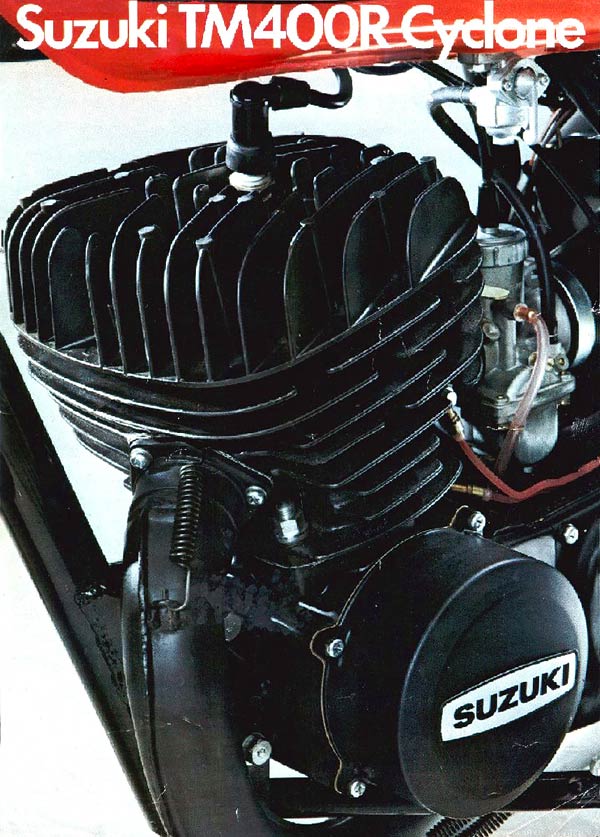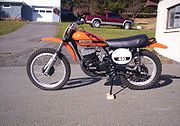Back in the day when I was younger and racing dirt bikes, I had a 1972 Suzuki TM-400R Cyclone. Long story short, it was highly modified from the frame, to the suspension, to the engine.
I had an over-sized Mikuni carb on it, was well as a full port job on the jug, and the head had been milled. I got the idea of a two spark plug set-up. It had a CDI electronic ignition on it. I purchased an additional coil for it and wired it into the ignition system.
Because I had installed a "frame handling kit", the engine sat approx. 1.5" lower in the frame, thus exposing the area under the fuel tank. I had a fiber-glass after-market Maico tank on it. When I installed the extra spark plug in the head, it was very obvious that the engine was running two plugs. It looked trick as all Hell.
Whether or not it made any actual difference was hard to tell. I had modded the bike so much, that it was pretty much anyone's guess as to how much of a difference all the mods made. Even with the frame handling kit, it was still a handful. The engine itself was making extreme power and that was both good and bad at times. If there had been a line drawn in the sand, as to indicate where not to cross, I'm sure I went well beyond that line.
By doing all the mods, I had dropped the bike's OEM weight by almost 15 lbs. I increased the engine's power, and it was very obvious, but I had no way to gauge the degree or amount.
I still have a picture or two of the bike in all it's glory after all the modifications........somewhere. If I ever find the pics, I'd love to figure out how to post them. It even sat in a Suzuki dealer's showroom alongside some stock TM-400R's for a month or two, on display.








 ) would help it.
) would help it.

